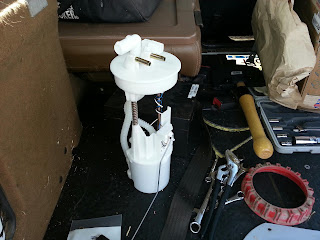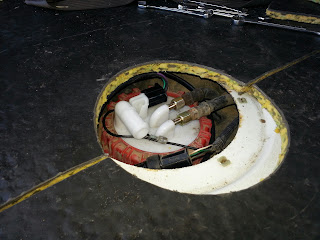I wrote this for my original website and a less grammatically correct version of this post can be found in its original location. Many of you have read it before. You may have seen the link and never clicked it. In any event here it is…
This is a brief explanation of the Difficulty Scale I often refer to. I am not the most mechanically inclined person on earth. I would not even place myself in the top 20% of the population.
Obvious questions come up when someone who owns a Land Rover and maintains it himself makes a statement like the one above.
A few of my favorites are…
“What possessed you to buy a Land Rover?”
“You’re not the sharpest knife in the drawer are you?”
“Are you going to buy a Jeep when you get tired of pushing that Land Rover?”
There are others, I’m sure you’ve heard them.
This is my scale. I have some friends that my 5 is their 3, notably The Evil German Dude (EGD) and JagGuy. The only reason they don’t have home-made nuclear power reactors in their secret evil lairs is the federal government frowns on the private ownership of U-238 and U-235. Guys like them can disassemble and reassemble entire motors in the dark, asleep, and not lose any parts. I’m not one of those guys.
This is my scale that I use to gauge how hard a project might be. It has five levels, Level One being the easiest, Level Five being virtually impossible for me.
Level One
Easy. A talented 5 year old child could do the work. If you can’t do this level, get a 5 year old, they would love to help.
Examples: Single tool jobs. Using a screw driver to replace a light bulb. Oil changes.
Level Two
Technical. You may have to read the instructions. Usually requires more than the Official Land Rover On-Board Tool Kit. You’ve heard…
“It ain’t rocket science.”
or
“It ain’t brain surgery.”
And my personal favorite,
“It ain’t rocket surgery.”
Those are common phrases used for this level.
Examples: Replacing the brake pads. Replacing the battery or an alternator. Replacing belts.
Level Three
Moderate. You are gonna get dirty doing this level. Taking it apart and putting it back together more than once are common. At this level after you render the vehicle undriveable you will find you may need a new or special tool you don’t own, and must reassemble the vehicle to go and purchase it because your wife has taken the kids shopping in the minivan.
Examples: Radiator removal. Fuel pump replacement. Replacing tie-rods.
Level Four
Hard. Higher math skills desired. You will have the vehicle apart for more than a few hours. Pray for good weather or decent shop where the work can be done in a semi-climate controlled environment. Three-dimensional spatial skills are used at this level. A high degree of praying to the Land Rover gods wouldn’t hurt either.
Examples: Brake caliper rebuild. Tracing electrical problems. CV Joint replacement. Heater core replacement.
Level Five
Impossible. The ability to understand particle physics is good here. Find a mechanic or an automotive Superhero that will work for beer or who owes you money. Common phrases often heard at this level…
“No, I don’t know what happened, send a tow truck.”
or
“That’s not a place I would have expected smoke to come out.”
or
“I think I have a Visa card with that amount available on it.”
Examples: Head gasket repair. Transmission rebuild. Anything inside the engine.
Once again this is my scale. I’ve emailed with gents and ladies that said my Level One was their Level Three. I totally get that. Don’t get frustrated with the job. What might seem complicated gets considerably simpler when you are holding the replacemnet parts in your hand. Don’t be afraid to ask for help. How are you ever going to learn if you are never taught?
Thanks for reading, and Happy Rovering.







